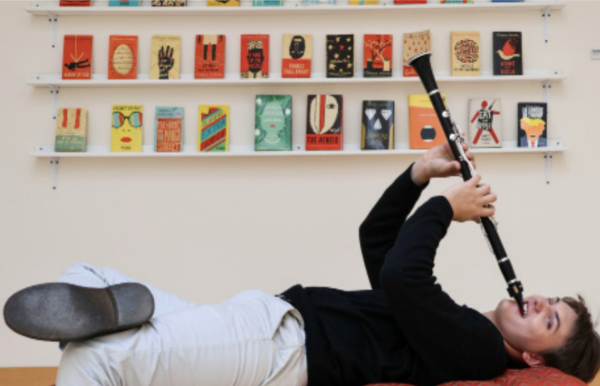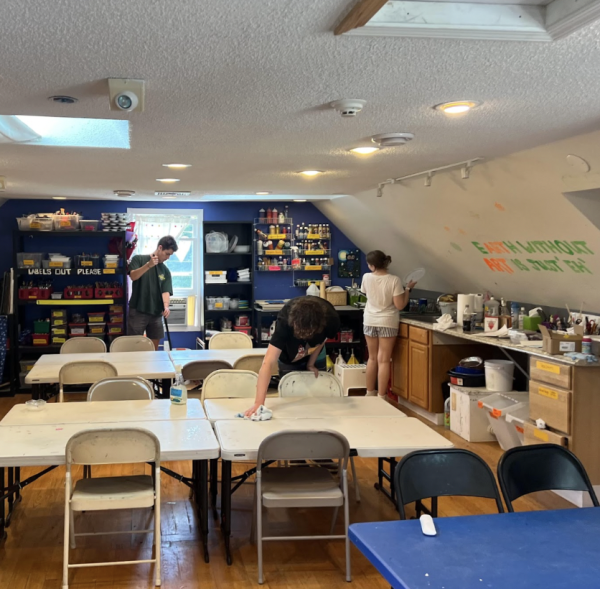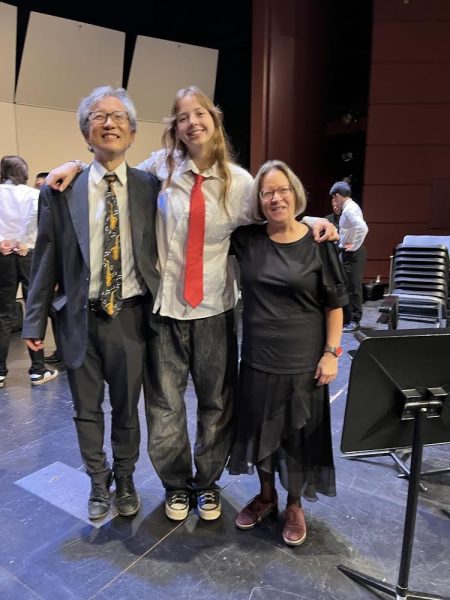Artist of the Issue: Yuen Ning Chang
Yuen Ning Chang ’21 is an artistic mastermind with the capacity to bring to life any medium she engages with. She has drawn much inspiration from her mother, who used to work in the Chinese Arts department in Sotheby’s and now curates the Jin Ze Art Centre, which is located in Jinze canal town of Shanghai. From crafting sets for Groton’s theater program to capturing various scenes from Zamtang County, China with stunning nuance, Yuen Ning’s various expressions of her artistry is nothing less than sublime.
How did you get started with your art career?
I grew up in the community of my family’s Chinese arts center in an ancient canal town of Jinze, in the outskirts of Shanghai. I met craftsmen of diverse backgrounds and was exposed to many mediums of art from a young age. I have always enjoyed making art, whether it be sketching, watercolor painting or photography. I was then exposed to film in a media course I took right before coming to Groton, and that’s when I started focusing on film and documentary making.
How are you involved with art at Groton?
At Groton, I am a visual art prefect and a theater prefect. In my four years, I’ve taken many visual arts electives, and some of my favorites are Art without Boundaries and Portfolio Prep. In the former elective, I made a 3D headpiece inspired by Japanese Geishas, crafted entirely out of paper. That is still one of my favorite art projects I have ever done. I do Stagecraft in the fall, and I also help out in the winter while I play squash, because I would never let myself miss out on working on the musical sets, which are usually the most elaborate.
Of all the different ways that you have engaged with art at Groton, is there one particular project that you have found to be particularly meaningful?
Designing and building the set for We Can’t Call it Antigone has to be one of the most unforgettable and meaningful experiences I have had during my time at Groton. John Donovan ’20 and I were very lucky to have the chance to be set designers, as students rarely get such an opportunity even at the college level. From making rough sketches to sculpting figures on golden door panels, it was such a rewarding feeling to see the set come to life. I learned much about the many aspects involved in creating a set and made meaningful friendships with both students and staff in the theater program.
Do you have any primary sources of inspiration for your work?
My primary source of inspiration for my work probably comes from my time in Zamtang. I have spent every summer since third grade in Zamtang, a small town hidden in the Tibetan highlands of Sichuan, China. I’ve always admired Zamtang’s deeply-rooted traditions and cherished the people of the secluded sanctuary. Hence my artwork often reflects themes of cultural preservation, Buddhism and nature. My first documentary is about Zamtang and examines the potential challenges to the community’s future, with a focus on Jonang Thangka painting. My second documentary, which I completed this past year, is about the process and traditions of Tibetan medicine-making.
Do you feel like there is a sense of cross-pollination of ideas between the mediums that you have explored in the past (stagecraft, film, visual art)?
I definitely feel a strong sense of connection across the different mediums of art I have worked with. For instance, in Stagecraft, apart from building sets, I also film trailers, take photographs, and create audio clips for plays — these are skills I learned in filmmaking, and they inspire my creativity in visual arts and theater. To me, not only is there a connection between different mediums of art but also between all fields of learning. My visual arts projects, documentaries, and experiences from stagecraft have inspired me in areas beyond. I felt this especially when writing my own Waste Land in Mrs. Sen-Das’s winter elective; in my poem, I alluded to my life experiences and art I have explored in all mediums.
Throughout your art career, are there certain individuals who have been particularly impactful?
I’d say that all the artists and people who have supported and inspired me have made an impact on me. Ms. Ho and Mrs. De Jesus-Akuete have given me unconditional guidance throughout my time at Groton, and for that I am very grateful. But at the same time, something like a simple text message or email commenting on my documentaries is equally meaningful to me.
Are there any projects that you are looking forward to doing in the near future?
In the near future, I will continue working on my documentary series on Zamtang. If Covid-19 conditions allow, I will be visiting Zamtang again this summer to film my third episode with a focus on the women of Zamtang.






